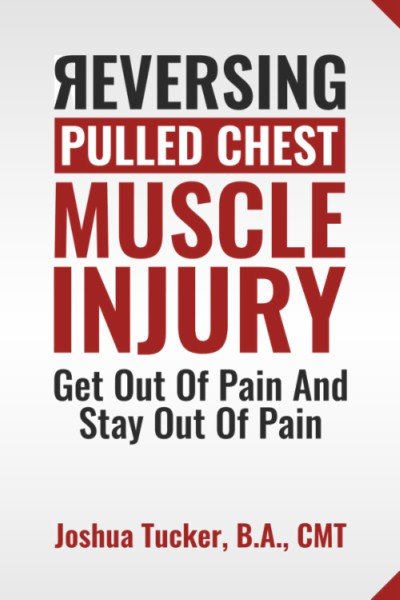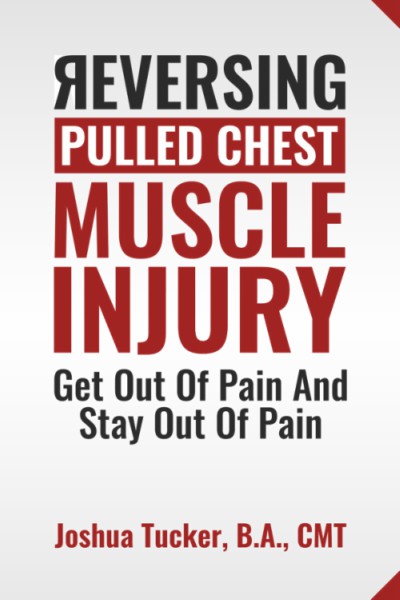Pulled Chest Muscle Symptoms
Pulled Chest Muscle Symptoms range from mild to severe, sharp to dull, aching to stabbing. It just all depends.
If you're lucky, you just 'tweaked' your chest muscle structure.
If you're a little less lucky, you strained the tendon.
If you're a lot less lucky, you now have a chest muscle tear.
If you're pulled a muscle in your chest, the bad news is that it's really about your tendons, not your muscle.
Pulled Chest Muscle Symptoms
What Is A Pulled Chest Muscle?
As you read (or will read) on the main Pulled Muscle Symptoms page, there are three levels of a pulled chest muscle.
The most mild is a 'tweak', where for a variety of reasons, the muscle is just in spasm, or otherwise temporarily unhappy due to insufficient nutrition, blood supply, etc.
A strained chest muscle is really a case of the tendon that attaches muscle to bone, has been stretched a little bit. Tendon is not supposed to stretch, so this is a bad thing.
The more it stretched, the worse your pulled chest muscle symptoms will be.
A chest muscle tear is where the tendon has ripped at least 5%. This can mean significant problems. Less problem than a 50% tear (which would qualify as tendon rupture), but a problem none the less.
So depending on how badly you've pulled a chest muscle (and
really, 'pulled' is just commonly used slang), your symptoms will be
mild, or worse.
Pulled Chest Muscle Symptoms
What Got Pulled, Exactly?
It's great to get specific, and find where exactly the problem is.
Primarily you're looking at the Pectoralis Major and Pectoralis Minor muscles.
The Pec Major is the big broad chest muscle that connects,
essentially, all around the sternum and ribs, with a big tendon
connecting at the shoulder.
The Pec Minor is a smaller, but very dense and strong muscle. It connects, essentially, to the ribs with a big tendon connecting to the Coracoid Process.
Poke around the area, see what you feel.
If you have pulled anything, it's likely the body of the muscles will be sore and tender. So poke around, follow the muslces, and find the tendons.
Maybe you pulled something around the rib/sternum connections, which will be little stretch or tear in the webbing of connections.
You're looking for a hot spot. Meaning, sharp, painful, MORE PAINFUll that the areas around it.
If you have a tear, new or old, it's very likely that you'll be able to find a SPECIFIC spot. You'll know it when you feel it!
Pulled Chest Muscle Symptoms
What To Expect
Tweaks generally won't last very long. Sharp and/or dull pain, mostly when using the muscle, ache (even at rest), are the main symptoms.
Recovery time is days, maybe a week or more.
Strains are about the same, but hurt a little worse,
and a little longer. If the tendon stretched more than a little, this
can create a chronic pain dynamic.
Recovery time is a few weeks to a few months.
It can be easy to confuse between a chest muscle tendon strain and a small tear.
Tears can be, and usually are, debilitating. Sharp, serious pain that keeps you from using the structure.
Chances are, if you have a torn chest muscle (tendon, really, as muscles almost never tear), you'll know it.
If you're an athlete and have a tear, you won't be able to perform like you want to, certainly without significant pain and significant threat of tearing the tendon even worse.
If the tendon has a tear, then it is structurally MUCH weaker. You will want to keep the load off until it heals. You may need surgery depending on the size of the tear, and your desired activity levels.
Pulled Chest Muscle Symptoms
Important Things To Know
** If you have muscle twitches or spasm of any kind, it's likely that you are Magnesium Insufficient. Learn about, and then supplement with, Magnesium.
** If you have pulled a chest muscle, you probably already had, and absolutely now to have, an active Pain Causing Dynamic.
** If you have a chest muscle strain, or a chest muscle tear, you are now, by default, on the path to Tendonitis.
A pulled chest muscle can be minor, or severy. Pulled chest
muscle symptoms are NOT to be ignored. Listen to what your body is
trying to tell you, and treat it right.
The more you know what's going on, the better post-injury self care you give yourself, the faster your pulled chest muscle symptoms will go away.
Nutrition Plays A Huge Role In Tendon Health
Tendon and connective tissue is made of building blocks. Nutrition is what makes up the building blocks.
Nutrition also plays a role in how optimally the muscle functions (too tight, relaxed, constant spasm, etc).
If you're an office worker or an athlete, the more nutrition you have the better your body works. In the US, we're pretty hurting for nutrition (even though we're overloaded with calories).
There's maintenance nutrition, and there's therapeutic nutrition. Therapeutic nutrition for pulled chest muscle symptoms helps the body heal and work better so the symptoms will go away.
Maintenance nutrition is to KEEP your body from getting pulled chest muscle symptoms in the first place.
Unfortunately, we rarely pay attention until we have pain. Pain is a GREAT reminder to help our bodies get and be healthy.
For more on that, see the Best Tendon Supplements page.
Return to the top of this Pulled Chest Muscle Symptoms page.
Go to the main Pulled Muscle Symptoms page.
Go to the main Tendonitis page.
Go to the www.TendonitisExpert.com homepage.
| Share Your Story
|



